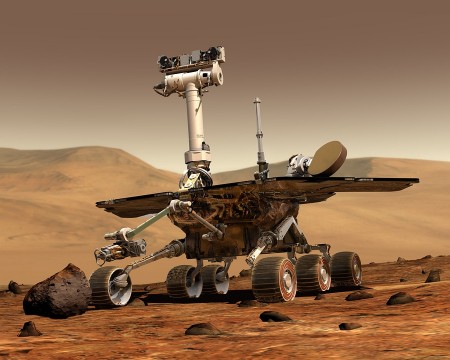A new study about the discovery of a mineral on Mars that is baffling scientists was co-authored by a University of Guelph physics professor.
The research involving Ralf Gellert was the focu s of a CBC news story today.
s of a CBC news story today.
Gellert was part of a team of international scientists whose research appears this week in the journal Proceedings of the National Academy of Sciences. NASA scientist Richard Morris headed the study.
The researchers found that a rock sample discovered in the Gale Crater — believed to be the bed of an ancient lake — contains tridymite.
Previously, scientists had not believed that Mars conditions could produce this mineral. It typically comes from hot volcanoes when lava is exposed to ocean water.
“It’s never expected to find something like that [tridymite] in Gale Crater on Mars,” Gellert told CBC.
The mineral was confirmed using X-ray analysis.
Gellert headed an international group of scientists that developed an alpha particle X-ray spectrometer (APXS), mounted on the arm of the Mars rover Curiosity.
 The APXS scans rocks and soil in order to decide where to drill and take more detailed measurements.
The APXS scans rocks and soil in order to decide where to drill and take more detailed measurements.
The device is Canada’s contribution to the Mars Science Laboratory mission.
Data from the device comes to U of G, where day-to-day APXS operations and analysis occur in a specially equipped room in U of G’s MacNaughton Building.
Gellert was involved in designing and building an earlier version of the instrument for twin rovers that landed on Mars in 2004. The APXS on the Opportunity rover still sends data to Earth.